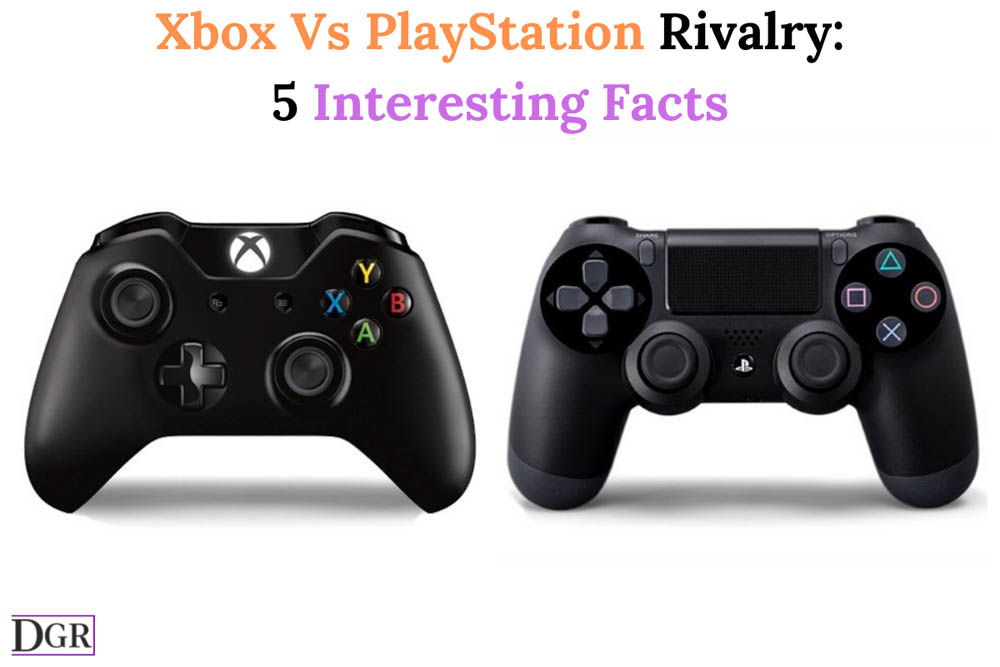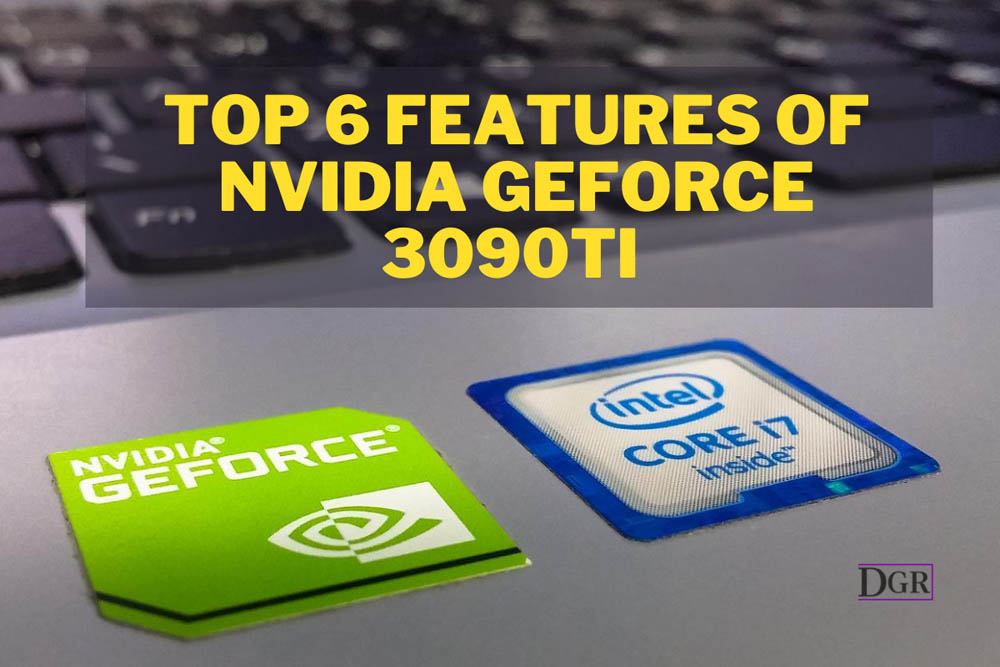AMD vs NVIDIA: Which is the Best GPU?
AMD vs Nvidia. If you’re building a gaming PC, you’ll inevitably be faced with choosing between the two GPU heavyweights. Both companies make GPUs that power the best graphics cards, fighting for supremacy in our GPU benchmarks hierarchy. AMD vs Nvidia isn’t the only decision you’ll need to make when building a PC, of course. You’ll also need to choose between AMD vs Intel CPUs. Our focus here will be on graphics, however, and we’ll be looking at performance, features, drivers and software, power and efficiency, pricing, and more.
The AMD vs Nvidia flame wars has been cooking since the late 90s, with Nvidia currently leading in the GPU arena by most metrics. Its graphics cards account for the majority of GPUs on the Steam Hardware Survey, for example, and in terms of pure finances, Nvidia is worth roughly three times as much as AMD (with a large chunk of AMD’s resources devoted to CPUs).

But we’re not interested in the distant past or finances. We want to find a winner in the current battle of AMD vs Nvidia GPUs. That primarily means looking at AMD Big Navi and Nvidia Ampere graphics cards, and perhaps adding Intel Xe-HPG to the mix whenever that arrives (probably this fall, based on the Xe-HPG Scavenger Hunt and other PR stunts).
It’s important to keep the big picture in view throughout this analysis. We’re not just focusing on the fastest GPU, the most power-efficient GPU, or the best bang-for-the-buck GPU. We’ll consider all of the factors in each category, from budget to mid-range to high-end and extreme GPUs, along with the tech behind the GPUs. We will declare a winner today, but of course, this isn’t the end of the war. It’s more like owning the heavyweight GPU title: A victory today doesn’t mean your opponent won’t come back leaner and meaner next year.
With that preamble out of the way, let’s pull out the boxing gloves and go the rounds with AMD vs Nvidia.
1. AMD vs Nvidia: Gaming Performance
For decades, faster GPUs have enabled game developers to create increasingly detailed and complex worlds. While you can find everything from budget GPUs to high-end offerings from both AMD and Nvidia, when it comes to outright performance, NVIDIA has a slight overall lead thanks to the chunky GeForce RTX 3090. Beyond the pole position, however, it’s a closer match. If you look at our GPU benchmarks hierarchy, you’ll see that the top five positions consist of two GPUs that use Nvidia’s GA102 architecture (the 3090 and 3080) and three GPUs using AMD’s Navi 21 architecture, with AMD bookending the Nvidia cards.
There’s a catch, of course: We’re only looking at games running APIs and settings that work on all GPUs, which means we haven’t included ray tracing or DLSS in the results. We also haven’t included any FidelityFX results, and CPU bottlenecks certainly play a role at lower resolutions. Here’s the full rundown of performance, using the nine games and six settings/resolutions combinations from our GPU Benchmarks.
Nvidia’s RTX 3090 isn’t remotely affordable, of course, and that’s before we take into account the current market conditions. We’ll discuss that more in a bit, but the GeForce RTX 3080 and Radeon RX 6800 XT represent a better view of performance. Those two trade blows in traditional rasterization games, with AMD vs Nvidia perhaps taking a slight lead, while Nvidia easily jumps ahead — often by a large margin — as soon as ray tracing and/or DLSS get turned on. We give Nvidia a slight lead at the top of the performance ladder, but that’s not the only category to consider.
Looking at the mainstream market ($400, give or take), things get a bit messy. AMD’s Radeon RX 6700 XT takes on the GeForce RTX 3060 Ti, with slightly better performance — provided once again that we ignore RT and DLSS. In our review, we called it a net tie. However, AMD’s card (theoretically) costs 20% more than Nvidia’s offering, never mind the GeForce RTX 3060 12GB. We’re still waiting to see other Navi 22 models arrive, however, and an RX 6700 (non-XT) could make for a better option. Older model GPUs are mostly outclassed by the new arrivals, so Nvidia nominally wins the mainstream market as well, depending on the availability of cards. This is one of the advantages of AMD vs NVIDIA.
What about in the budget category? There haven’t been any new budget GPUs since last year. Looking at existing cards, the RX 5500 XT 8GB vs GTX 1660 goes to Nvidia again, and in general, we’d normally recommend avoiding the lower tier GTX 1650 or RX 5500 XT 4GB. But these are not normal times. Anyway, until RTX 3050 / 3050 Ti or RX 6500 XT cards arrive, Nvidia has a lead in the budget sector, even if many of the categories are close. The GTX 1660 is a touch faster and uses a bit less power, for roughly the same price. Well, not really the same price these days, but we’ll hit that below.
What about cards that cost even less? Right now, that means older GPUs that have 4GB of VRAM, because GPU and component shortages combined with cryptocurrency mining have inflated prices on everything. Some older generation cards like AMD’s Radeon RX 570 4GB or Nvidia’s GTX 1060 can be found for under $200, but supply is spotty at best.
Winner: Nvidia Across a large suite of games AMD vs Nvidia, Nvidia wins in most categories. AMD does okay at the top sector with the RX 6700 XT, RX 6800, RX 6800 XT, and RX 6900 XT, but a tie at the top and losses everywhere else give Nvidia the overall win for now.
2. AMD vs Nvidia: Power Consumption and Efficiency
Prior to AMD vs Nvidia Navi, GPU power efficiency was decidedly in favor of Nvidia. But Navi changed all that, and Big Navi has further improved AMD’s efficiency. Using chips built with TSMC’s 7nm FinFET process and new architecture that delivered 50% better performance per watt, Navi started to close the gap. Except, it was so far behind that even a 50% improvement didn’t fully address the efficiency deficiency.
But Nvidia’s Ampere architecture pushed higher clocks at the cost of efficiency, while AMD’s Big Navi gets a healthy boost in efficiency from the Infinity Cache. The net result is that Ampere and Big Navi are pretty close to tied.
Using Powenetics hardware to capture the real graphics card power use of GPUs, we’ve tested all of the current and recent graphics cards from both companies. We’ve also tested third-party cards from both sides, but we’ll confine the charts to the reference designs as much as possible.
While power use favored AMD vs Nvidia’s older GPUs, sometimes by a wide margin, the differences in the latest generation hardware go the other way. RTX 3090 uses the most power, followed by the RTX 3080 and then the three Navi 21 cards: RX 6900 XT, 6800 XT, and 6800. Previous generation cards like the Titan RTX, 2080 Ti, and 2080 Super fall in between the 6800 and 6800 XT, but we’re less interested in those.
Below that, differences are small enough that there’s no clear winner. AMD’s RX 6700 XT uses a bit more power than the RTX 3070 and a bit less than the RTX 3060 Ti, but they’re all in a 10W range. The 3060 12GB uses 35W less than the others, but it’s at a lower performance tier as well.
Among the previous gen budget GPUs, Nvidia’s GTX 16-series cards have a small lead, particularly in FurMark — which isn’t nearly as important as gaming power use. Still, Nvidia’s GTX 1660 Ti and GTX 1660 Super use a bit less power but perform up to 20% faster than the RX 5500 XT 8GB. It’s not a major difference, but it’s still a win. Similarly, dropping down to Nvidia’s GTX 1650 line, the GTX 1650 Super edges out the RX 5500 XT 4GB by a hair in performance while using 25W less power, while the GTX 1650 GDDR6 shaves off another 20W but also drops 17% in performance. This is one of the interesting things about AMD vs Nvidia.
Winner: Tie Focusing just on the current generation AMD vs Nvidia, AMD Big Navi, and Nvidia Ampere GPUs, power and efficiency are relatively close, especially when looking at non-reference designs where power limits often end up around 350W. AMD takes a slight lead at the top, the middle’s a tie, and the previous-gen budget cards favor Nvidia. TSMC’s N7 process also factors in, helping out AMD vs Nvidia’s use of Samsung 8N likely reduces overall efficiency.
3. AMD vs Nvidia: Featured Technology
Most of the features supported by AMD vs Nvidia seem similar, though the implementations do vary. Both support ray tracing now, which allows for some nice effects, but it’s not required to get a good gaming experience. Nvidia’s DLSS is a bigger factor, as FidelityFX Super Resolution (FSR) isn’t ready yet. There are other aspects as well. G-Sync takes on FreeSync, Radeon Anti-Lag goes up against Nvidia’s ultra-low latency mode plus Reflex, and there are other areas where features effectively match up as well.
Supporting the same APIs and similar hardware features don’t make things equivalent, however. Ampere and RDNA2 also support mesh shaders and variable rate shading (VRS), as well as some other features that are all part of the DirectX 12 Ultimate spec. But Nvidia’s performance in ray tracing tends to be quite a bit higher than AMD, even without DLSS.
While FreeSync and G-Sync might seem equivalent on the surface, the best G-Sync displays are almost invariably higher quality and better latency than FreeSync displays. The same goes for AMD’s anti-lag and Nvidia’s ultra-low latency and Reflex: Similar in theory, but in practice Reflex implementations come out on top.
Video encoding and decoding are other important aspects, and here Nvidia definitely comes out ahead. The Turing and Ampere codec support higher-quality encodes and lower GPU utilization, both good things. There’s no need for CPU-based video encoding with Nvidia’s latest GPUs.
There is one area where AMD has a clear advantage, though it’s also perhaps to AMD’s detriment. TSMC’s N7 7nm process that AMD uses for RDNA2 (and RDNA and Zen 3 and the PS5/XSX) chips clearly delivers better performance and power characteristics than Samsung’s custom 8N 8nm (really just an improved version of Samsung’s 10LPP process). The catch is that lots of other companies also want to partake of TSMC’s goodness — AMD, Apple, Nvidia GA100, Qualcomm, and even Intel all use TSMC, along with various other smaller players. This becomes a problem when TSMC doesn’t have enough capacity to meet the demands of all of those companies. This is one of the interesting things about AMD vs Nvidia.
Winner: Nvidia While AMD vs Nvidia has superficial parity on most features, Nvidia’s implementations are generally superior — and cost more. G-Sync, Reflex, DLSS, and NVENC all end up being at least slightly better than AMD’s alternatives.
4. AMD vs Nvidia: Drivers and Software
Trying to determine a clear winner in the drivers and software category is difficult. Quite a few people previously encountered black screen issues with AMD drivers on RX 5000 Navi series GPUs, while others didn’t have any difficulties. Newer drivers have fixed these problems, but some user complaints continue. Nvidia drivers aren’t foolproof either, and depending on the game and hardware, issues crop up for both companies. But is one company doing better with drivers?
AMD makes a lot of noise about its yearly driver overhaul. The Radeon Adrenalin 2020 drivers consolidated everything under one large umbrella, aiming to simplify things, though it can be confusing at first if you’re used to the older drivers. AMD vs Nvidia tends to skip WHQL (Windows Hardware Quality Labs) testing, which means fewer hoops to jump through and potentially more bugs slip through, but Microsoft’s insurance of a minimum level of functionality doesn’t really mean much for gaming purposes. You can generally count on at least one new AMD driver per month, often more if there are major game launches.
Nvidia’s driver schedule follows a similar cadence. You’ll get new drivers for major game launches or new graphics card hardware. Nvidia’s releases (outside of hotfixes) are all WHQL certified, and Nvidia also has a separate Studio Driver branch for content creators.
One of the big differences between AMD Vs Nvidia drivers is that Nvidia has two separate user interfaces. The Nvidia Control Panel handles things like resolutions and certain graphics settings, while GeForce Experience tackles game optimizations, driver updates, and extra features including ShadowPlay, Ansel, and more. Annoyingly, you have to log in and solve a captcha prompt to use GeForce Experience, which is something I’ve done more times than I’d ever want to count. Just say no to data mining plus drivers.
Winner: Tie We prefer AMD’s unified driver approach, as it’s one less interface to navigate AMD vs Nvidia, but there’s just so much stuff in the current releases. Nvidia’s Q&A is arguably better, though plenty of bugs and issues end up slipping through on both sides. This is one of the interesting things about AMD vs Nvidia. Quantifying drivers end up being an incredibly subjective affair, however, so we’re calling this one a draw.
5. AMD vs Nvidia: Pricing and Availability
Who offers the better value in the battle of AMD vs Nvidia? Ha. Hahahaha… The wheels fall off this comparison when we get to pricing, as everything remains on backorder. That’s been the case since the RTX 3080 launch last September, and while there are indicators — like the Steam Hardware Survey — that a fair number of people have managed to buy one of the latest generation GPUs, there’s no stock available at any normal retail outlet.
Our GPU Pricing Index takes a look at eBay pricing as an alternative since it’s the one place where you actually can find cards. They’re just sold at exorbitant prices, typically double to triple the official launch price. If you’re not willing to pay eBay pricing — and you shouldn’t! — you’ll need to exercise your patience muscle and just keep trying. Newegg has periodic ‘lotteries’ (several of us have entered multiple times and still come up empty), and we’re told AMD vs Nvidia continue to ship cards “as fast as possible” to their partners. Unfortunately, it’s not fast enough and other component shortages are also a factor.
At the top of the pricing spectrum, the RTX 3090 currently goes for around $3,000, which is double its already extreme $1,500 launch price. RTX 3080 meanwhile sells for roughly $2,200, over triple its official $700 launch price. Even if you’re lucky and manage to score a ‘deal,’ you’d be looking at $1,000 or more for the 3080 and $2,000 or more for the 3090. The only winner there is the retail outlet or AIB that’s raking in the money.
Stepping down to the RTX 3070 and RTX 3060 Ti, both sell for around $1,300–$1,400 on eBay. There’s a very strong correlation between eBay prices and Ethereum mining profitability, across all GPUs, and that extends down even to cards that only have 4GB and technically can’t mine Ethereum very well. (There are other cryptocurrencies that can still be mined on such cards, unfortunately for gamers.) Rounding out the latest GPUs, Nvidia’s RTX 3060 12GB ‘only’ costs $850–$950, which is pretty awful for a card that basically matches the previous generation RTX 2070 in performance.
AMD’s Big Navi GPUs aren’t much better. The RX 6900 XT sells for $1,800–$2,000, the RX 6800 XT goes for $1,500–$1,700, and the RX 6800 costs $1,350–$1,500. Technically, those are all much better relative prices than Nvidia’s Ampere GPUs, but no one should be spending such large sums of money for cards that ostensibly should sell in the $579–$999 range. Oh, and the new RX 6700 XT has a $479 launch price that costs $900–$1,100.
Mainstream and budget GPUs, or at least GPUs that should qualify as mainstream and budget offerings, aren’t any better. GTX 1660 variants sell in the $500+ range instead of $200-$250, and GTX 1650 variants cost $400 or more. The same goes for AMD’s previous-gen RX 5500 XT and RX 5600 XT.
Winner: Nobody It’s a terrible time to buy a graphics card, and that’s been the case since about last August. In retrospect, paying $700 for an RTX 2080 Super last summer would have actually been a ‘good’ deal, as such cards now generally sell for $1,000. If you can find a card at close to MSRP, AMD vs Nvidia match up pretty well, but we probably won’t see cards regularly available at or below MSRP until 2022 — and that’s assuming the mining profitability drops. This is one of the interesting things about AMD vs Nvidia.





